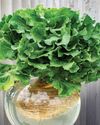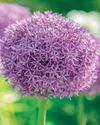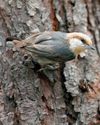
THE FIRST STEP in treating your plants is to understand the likely dilemmas and their solutions. Here are a few common questions I receive about ailing houseplants and how to address them. Once you know what to look for, you’ll be surprised by how quickly your diagnostic skills improve.
Why Are the Leaves Yellow?
Start by evaluating your regular watering habits. Watering too frequently or infrequently can cause leaves to yellow. Tropical plants prefer moist soil, while cacti and succulents like the soil to go dry between watering. Always use your finger to check the top 1 or 2 inches of soil for moisture before watering.
Increase success by using containers with drainage holes or self-watering pots with weep holes that allow excess water to escape. Pour off any water that collects in the saucer to avoid root rot, or place pebbles in the saucer to elevate the pot above the excess water.
Once you rule out improper watering, it’s time to review your fertilization schedule. Let the plants be your guide. Pale, yellow or stunted leaves may mean the plants need a nutrient boost. Use a diluted solution of houseplant fertilizer and only fertilize actively growing plants from spring through early fall, even if they’re always indoors.
Bu hikaye Birds & Blooms dergisinin December 2020/January 2021 sayısından alınmıştır.
Start your 7-day Magzter GOLD free trial to access thousands of curated premium stories, and 9,000+ magazines and newspapers.
Already a subscriber ? Giriş Yap
Bu hikaye Birds & Blooms dergisinin December 2020/January 2021 sayısından alınmıştır.
Start your 7-day Magzter GOLD free trial to access thousands of curated premium stories, and 9,000+ magazines and newspapers.
Already a subscriber? Giriş Yap

Basics of Hydroponics
Use these top tips and plant picks to have a successful soil-free garden

Rooted in Resilience
These hardy perennials will thrive in most zones

Social and Supportive
Brown-headed nuthatches take a helpful approach to raising their young

All About Owl Pellets
And why you should give a hoot about them

Ask the Experts
Advice from our pros about houseplants, bird feeding and more

BRING THE OUTDOORS IN
Making a terrarium is about as close as you can get to a Zen DIY project. Once you have gathered the proper materials and squared away your plant selections, it's as simple as layering it all together and watching your mini ecosystem thrive. Here, I'll walk you through my foolproof process and cover all the required elements for good filtration, healthy soil, strong root growth and resistance against fungus and disease.

GROW THIS. NOT THAT
Six easy-to-grow houseplants—and six that may not be the right choice for you

Winter MAGIC
Forecasts may be frigid, but grab your binoculars because birding opportunities are still incredible

Sense or Nonsense? - Why some birds can taste and smell - but others can't
Does a porcelain berry taste like a blueberry to a gray catbird? Does a block of lard smell like frying bacon to a northern flicker? The short answer is no. While some avian species do have a well-adapted sense of taste or smell, they can't distinguish between flavors and odors the way humans can. They're not picking up every ingredient in the suet you put out, says José Ramírez-Garofalo, an ornithology researcher at Rutgers University in New Jersey and the director of Freshkills Biological Station in Staten Island, New York.

Maple Mania - Amazing facts about this fall foliage mainstay
Amazing facts about this fall foliage mainstay